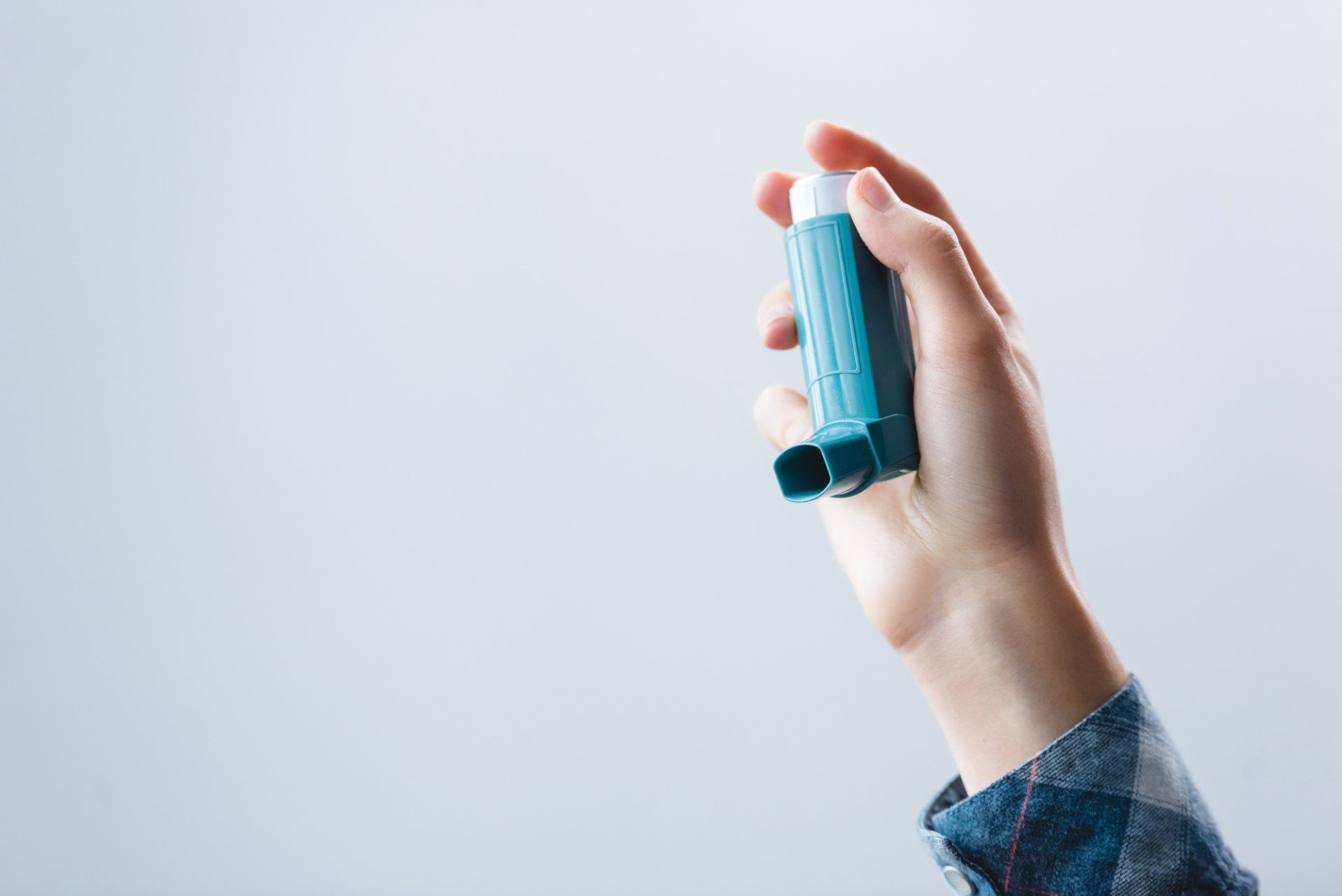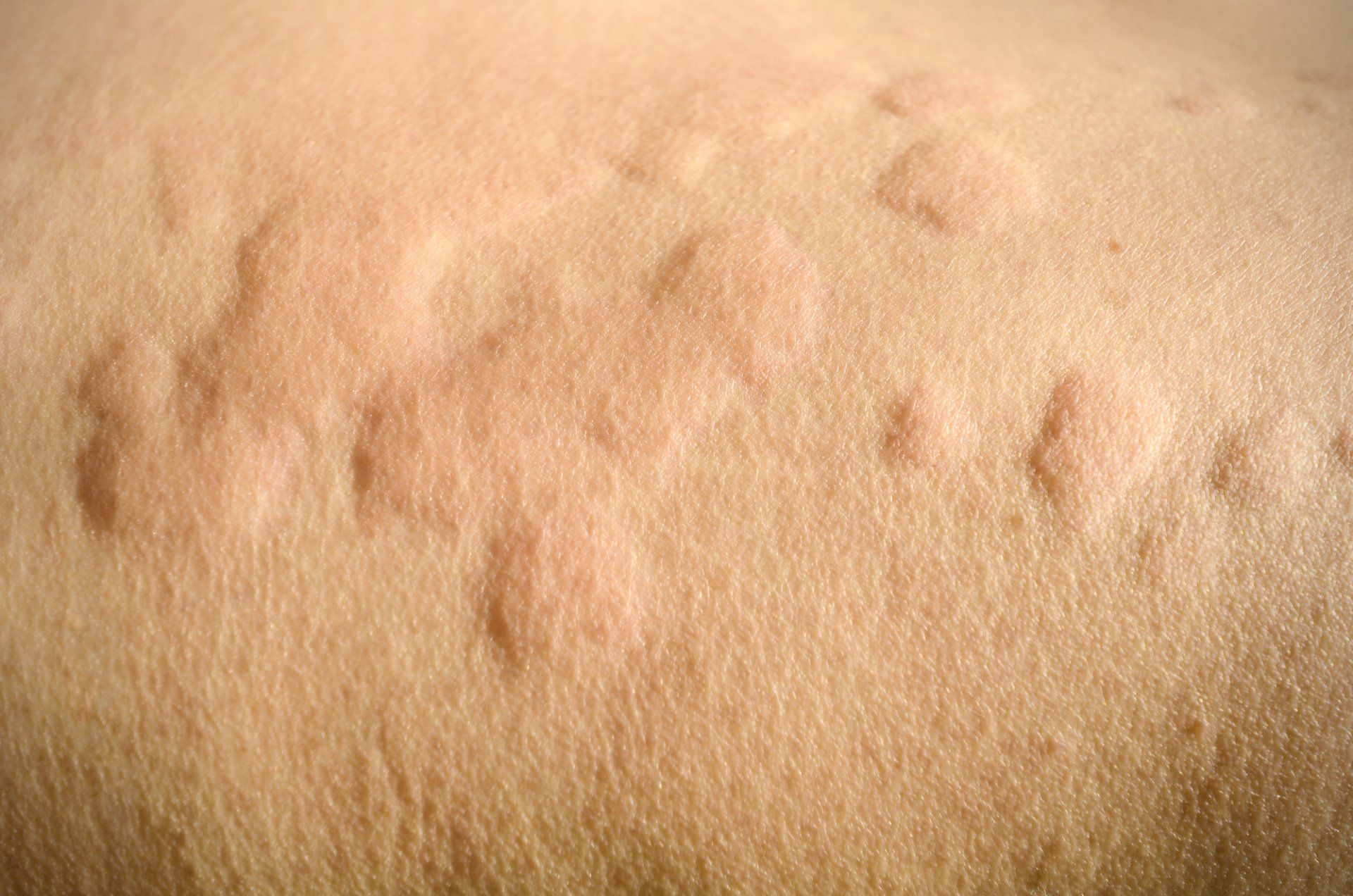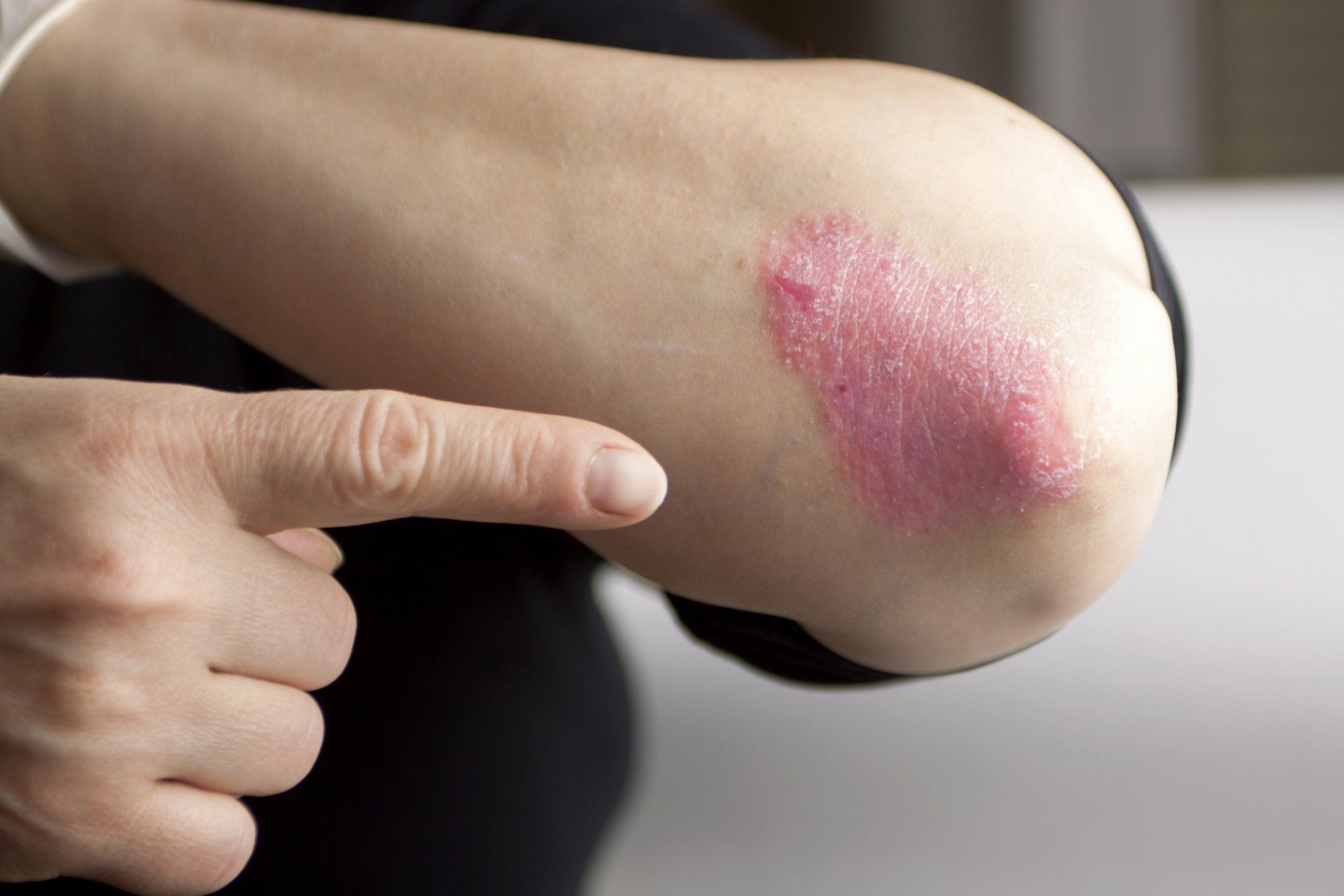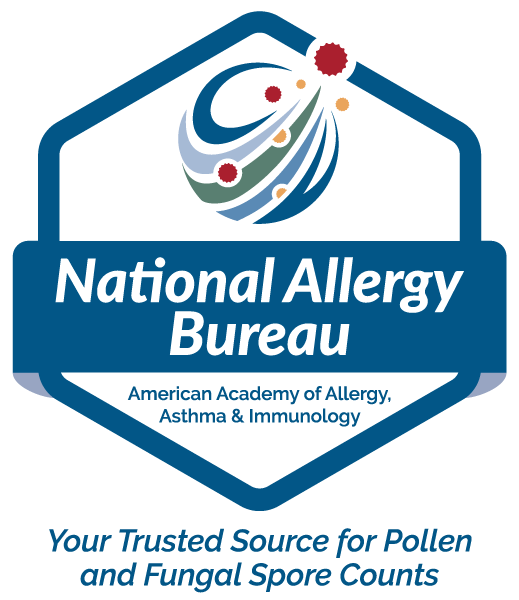Allergy & Asthma
Our Specialties
If you're not sure what treatment is associated with symptoms you may be experiencing, we are here to help! Book an appointment and we will walk you through an initial consultation and treatment plan.
Asthma
Your lungs are a system of branching tubes that carry the air you breathe. When you have asthma, the tubes become swollen and red. Just like a rash on your skin is itchy and painful, asthma is essentially a rash on the inside of your lungs. This is called inflammation. When your lungs are inflamed they become extra sensitive to many different things. These things are then called your asthma triggers. A trigger could be an infection, heavy exercise, the weather, smoke or allergies.
It is important to realize that inflammation is always present in asthma, even when you feel good. When you are exposed to your triggers, the inflammation gets worse. The airways of your lungs swell and produce extra mucous. This clogs the airways and makes it harder to breathe. Sometimes the muscles around the airways will tighten up and make it even harder to breathe. This is known as an asthma attack.
Some people think an attack is only a severe episode that sends the patient to the emergency room or to their doctor. But even mild symptoms are considered an attack and mean that your asthma is not under good control.
Asthma can begin at any age. Many people have asthma starting when they are very young. Others develop it later in life.

A few things to keep in mind...
- Asthma is always there. Even when you feel fine your asthma is still present and can worsen unexpectedly at any time!
- Even a patient with mild asthma can have a severe attack at any time. An attack can even be life threatening!
- There is no cure for asthma, but it can be treated and controlled so you live a normal, healthy life with no limitations!
Is your asthma under control?
Take this brief test to find out!
Allergies
When most people are exposed to the various things that float through the air it causes them no distress. These are things like pollens, mold spores, pet dander or insect (cockroach or dust mite) particles. But in some people inhaling these specific substances can lead to immediate and distressing symptoms. We don’t know why some people develop these allergies but there is definitely a genetic factor. Allergies tend to run very strong through families.
We also don’t know why people develop reactions to only certain things. Why to cat but not to dog? There must be some additional signal that determines when and why a person becomes allergic to a specific substance.
But we do know what happens when an allergic person is exposed to one of their triggers. The particle enters through the nose, mouth or eyes where the immune system recognizes it as an allergen (any particle that causes an allergic reaction). A reaction is initiated that causes certain cells in the body to release histamine and a host of other chemicals. These chemicals cause itching, swelling, mucous drainage and inflammation. This reaction is often limited to the local area (such as the nose or eyes) but it severe cases it can spread to other areas like the lungs or skin.

Food Allergies
Food allergies are a special kind of allergy. They are usually much more severe than a regular pollen allergy. This is likely because the food particle is absorbed into the person’s blood stream where it can trigger a whole-body (“systemic”) reaction. These reactions can be mild but have the potential to be very severe.
Mild reactions may involve just skin itching or hives. Sometimes there is some mild swelling. More severe reactions involve swelling of the tongue or throat which can block the ability to breathe properly. Sometimes patients have an asthma-like attack or they can pass out due to a sudden fall in blood pressure. In the most severe cases a patient can stop breathing or go into cardiiac arrest due to the severe reaction.
Food reactions must always be taken very seriously! A reaction can look very mild at first but quickly progress to a very severe reaction. Always treat food reactions quickly and aggressively!

Hives
Urticaria, commonly known as hives, is a skin condition that affects up to 20% of people at some point in their lives. That’s 1 out of every 5 people! The swelling that sometimes accompanies hives is called “angioedema” and can lead to swelling of the face, hands and feet. Hives usually feel very itchy and burning (although angioedema can even feel painful) or cause a tingling sensation — and these symptoms often make people miserable. Hives are caused by histamine being released into the skin, which causes raised, red itchy bumps of various shapes and sizes.
It’s nice to know that hives are a common problem but this isn’t much of a comfort to people when their lives are consumed with not knowing why they have their symptoms. Hives can truly turn a person’s life upside down. They’re uncomfortable and patients HATE not knowing what’s causing their hives, why they can’t sleep and why they don’t want to leave their homes to go to work or school — all of this can lead to emotional distress. Yet hives are usually easily treated with medications.
Some people have had hives for a few days while others have had symptoms for decades, and yet, each and every one of them is extremely bothered by their symptoms. Most hives are temporary and will resolve spontaneously after days, weeks or sometimes months. Only a small number of patients suffer with hives for an extended period of time. Through a proper evaluation and treatment plan almost all people who suffer from hives can achieve good control of their symptoms.

Is your urticaria (hives) under control?
Take this brief test to find out!
Atopic Dermatitis
Atopic dermatitis is a chronic skin condition that causes itchy, scaly patches to form all over the body. Atopic dermatitis is diagnosed by the history of the symptoms and the appearance of the rash. There is no test that will diagnose eczema although tests may be done to help identify triggers for the problem.
Unlike many other skin conditions, eczema is not a rash that causes itching. Rather it starts as itchy skin that only forms a rash after the patient scratches at it. This scratching damages the skin and leads to the characteristic appearance of the rash. This is very important since if the itching can be blocked or controlled then the rash will not appear!
The rash itself is not unique to eczema but appears as redness with small bumps or even blisters. The skin may crack and some clear fluid may ooze out of the openings. With chronic scratching the skin may thicken and form leathery patches.
More unique to eczema is the location of the rash. In infants the rash is localized to areas where the child can scratch such as the face, chest and abdomen, arms and legs. Often there is no rash in covered areas such as under the diaper. In older children and adults the rash is classically found in front of the elbows and behind the knees but in more severe cases may be found anywhere within reach of scratching.

Non-allergic Rhinitis
Non-allergic rhinitis has symptoms very similar to allergic rhinitis (“hay-fever”). The difference is that it is not caused by allergic triggers! About half of all people with chronic nose symptoms have non-allergic rhinitis and are usually very surprised to find out that they don’t have “allergies.” Some patients actually have a combination of allergies AND non-allergic rhinitis!
Non-allergic rhinitis patients typically have more complaints of congestion, sinus pressure and thick post-nasal drainage and less of the classic sneezing, itching and clear, watery drainage seen with true allergies. Although all ages can be affected by non-allergic rhinitis, it becomes much more common as we get older.

Dust Mite Allergens
House dust contains a mixture of tiny pieces of fabric, dander, plant matter, and creatures so small that they are not visible to the human eye. These tiny creatures are called “house dust mites”. Dust mites are present in all homes and live in bedding, upholstered furniture, carpet, and stuffed toys. They thrive in hot, humid places (greater than 50% humidity), and feed on the dead skin that falls off the human body, as well as other organic matter. Mite proteins are a very strong allergen (something that causes allergies). If dust mite proteins are inhaled or come in contact with the skin of a person who is allergic, they may cause symptoms such as runny nose, itchy eyes, cough, wheezing, and/or dry, itchy skin.

Stinging Insect Allergies
Yellow jackets, honeybees, paper wasps, hornets, and fire ants can all be significant threats to those who enjoy the outdoors. Most people who are stung by one of these insects develop redness, swelling, and itching at the site of the sting. However, a small number of people may actually be allergic to these insects. Symptoms of a severe reaction may include widespread itching and hives, swelling in the throat or tongue, difficulty breathing, dizziness, stomach cramping, nausea, vomiting, or diarrhea. Rarely, patients may even experience shock and loss of consciousness, which may be fatal. If you experience any of these severe symptoms, you should seek emergency medical treatment right away. Following this treatment, a referral to an allergist can help you to learn how to stay safe in the future.

Drug Allergies
Adverse reactions to drugs are common. (adverse means unwanted or unexpected.) Almost any drug can cause an adverse reaction. Reactions range from irritating or mild side effects such as nausea and vomiting to life-threatening anaphylaxis. A true drug allergy is caused by a series of chemical steps in the body that produce the allergic reaction to a medication.
Eosinophilic Esophagitis
Eosinophilic esophagitis (EoE) is a disease that may mimic typical reflux. In this condition, a type of white blood cell, the eosinophil, appears in high numbers in the lining of the esophagus (the tube connecting the throat to the stomach). Patients with EoE may have a family history of this condition, or other allergic disease such as asthma, nasal allergies, eczema, or food allergy. Symptoms can be similar to heartburn, but may also include difficulty swallowing, a sensation of something “being stuck in your chest,” choking or vomiting, or even an impaction, where food must be removed from the esophagus with the aid of a camera (endoscopy). Currently, the only way to confirm the diagnosis of EoE is by a gastroenterologist taking a biopsy of the esophagus via endoscopy.

















